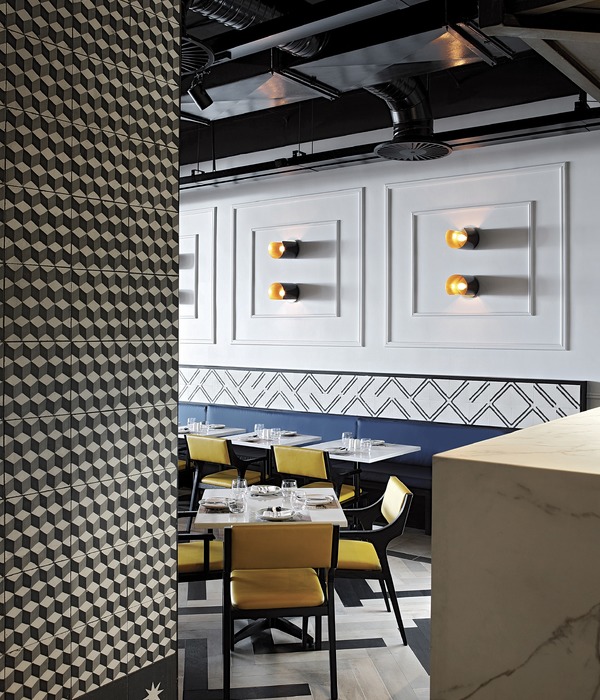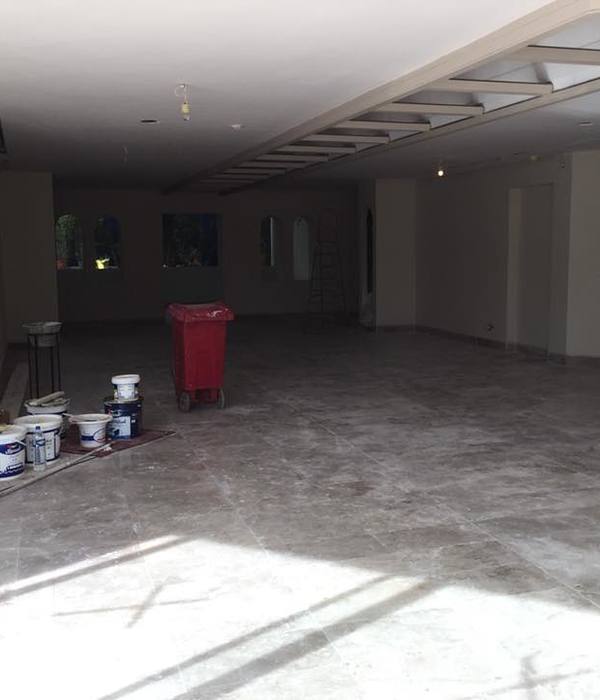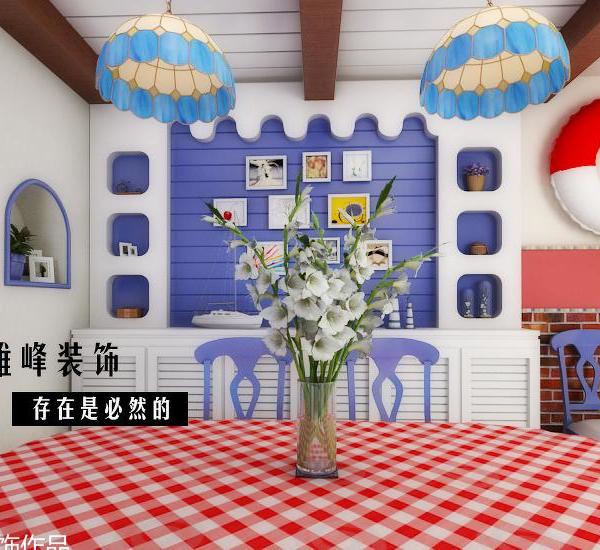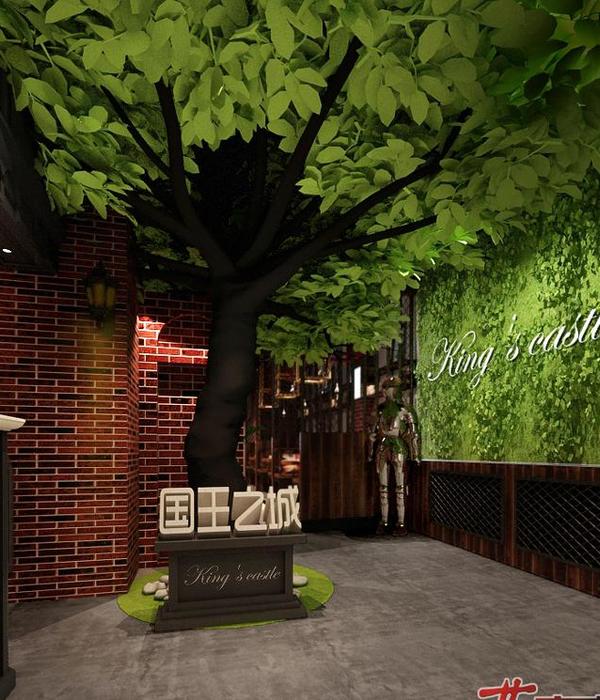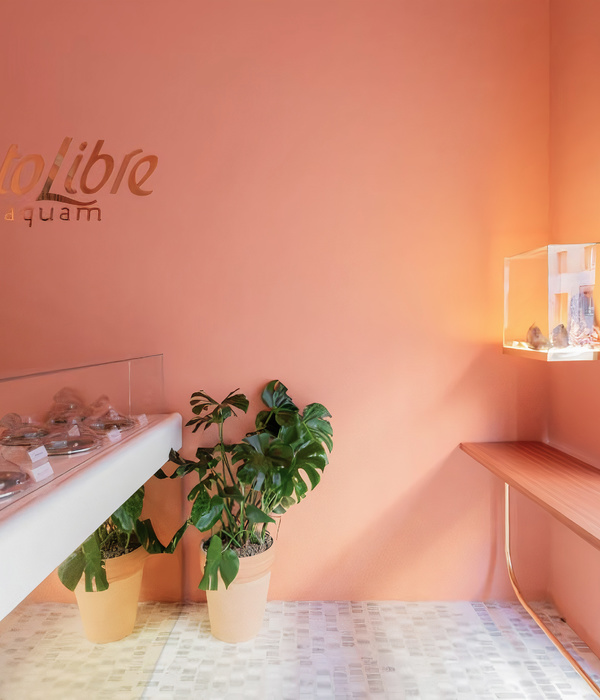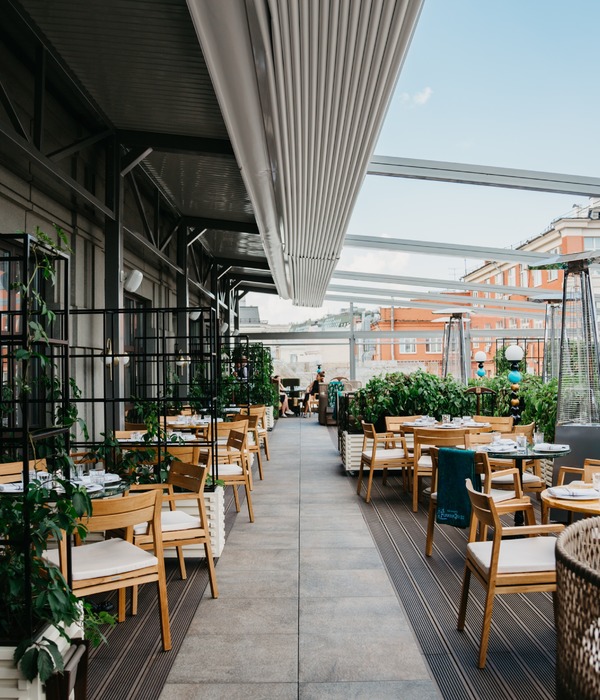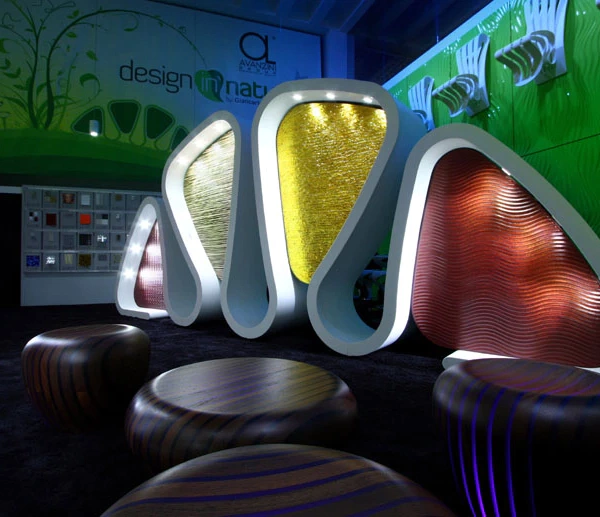The restaurant pizzeria Oi Marì is located in the heart of the "sassi of Matera.” It is divided into different environments dug into the limestone, each with a different shape due to conformation of the cave created by man over the centuries. Originally, new spaces within the cave were created through subtraction, adding to the existing living spaces by removing material from the mother block of calcarenite rock.
We like to think that those who created the so-called Sassi rather than add, subtracted matter to achieve a goal. Also, from this assumption comes the intention of our and our client’s project.
Oi Marì was born in 1999 thanks to its young owners who are Materan and Neapolitan. They were enthusiastic about wanting to introduce to Matera the Neapolitan culinary tradition. Over the years, their enthusiasm has evolved and their skills have led them to generate their own unique style of cooking.
Today, the restaurant overlooks a large open space that seems to envelop the visitor in a warm and harmonious environment that is highlighted by a few design elements that emphasize the natural beauty of the space.
"We wanted Oi Marì to have a different look." With this sentence Sara, Mary and Luca decided, after so many years, to turn the page and to show themselves in a different light to their customers. The pizza remains on the menu as a staple of their tradition, but the kitchen has evolved into refined and essential dishes.
Their request was to empty the old room of past trappings and to make the environment essential, just like their kitchen; while still honoring the history and traditions of the Neapolitan pizzeria.
This is where our inspiration comes from, design must respect the client’s desire, "remove, not add;” to tread lightly with a few, weighted, essential elements that can be the of a renewal.
The entrance from the small bar/reception area discretely welcomes the visitor, accompanying him through a succession of rooms of various shapes and sizes. The largest room is characterized by the presence of a wine cellar holding over 2,000 bottles. The bottles are nestled inside pre-existing niches while separated from the hall through a glass and metal structure. This is the crown jewel of the entire project. Being able to place within a strongly characterized space, not only an exhibition of wines but a real winery, was a great desire of Luca, who is a connoisseur of wines.
All the rooms are treated in the same way; the beauty of the cave has been enhanced, leaving the limestone completely exposed and introducing a few simple functional furnishings for use. All the furniture, the iron structures and the lights were entirely designed by the architects and crafted by local artisans. The lighting fixtures, inspired by the rolling pin used to roll out pizza dough, are the connecting element between the old and the new, between the tradition of the past and the vision of the future. The rolling pins are not whole but cut in half. It is therefore, a form that remembers tradition, reinterprets it and assigns it a new function, namely that of illuminating the rooms and the tables. A slender corten iron bar is also used and is transformed to serve various functions, from a display frame to a lamp holder, a glass holder for the bar and a structure to display panels. We have tried to reinterpret the philosophy of the owners of the restaurant in an architectural key, which, starting from simple raw materials of the highest quality, reinvent traditional cuisine without erasing its memory. The final product is the marriage between the old and the new, the desire not to make noise in a place that sometimes seems sacred, to respond with care and attention to the customer's request, giving him the convenience of working with a functional design and a warm and harmonious aesthetic. The design choices have also led to the enlargement of the kitchens and new spaces in the dining room, thus making the viewer discover environments that existed before, but were not rightly valued. These functional changes have become for us the inspiration to make the space even more interesting, giving a unique experience in new spaces to discover; each with their own charm. The materials used are the materials that, in our opinion, respond to the naturalness of these places; simple materials with warm colors that when well inserted and structured have responded to our aesthetic / functional needs.
[IT]
Il ristorante pizzeria Oi Marì si trova nel cuore dei “sassi di Matera”, è articolato in diversi ambienti scavati nel tufo, ognuno con una forma differente dovuta alla conformazione del luogo creata dall'uomo nel corso dei secoli. All'epoca, per costruire, si procedeva per sottrazione; alle abitazioni esistenti venivano aggiunti ambienti nuovi asportando materia dal blocco madre di calcarenite.
Ci piace pensare che chi ha realizzato i cosiddetti Sassi piuttosto che aggiungere, abbia sottratto materia per raggiungere un obiettivo. Anche da questo assunto nasce l'intenzione progettuale nostra e dello stesso cliente.
Oi Marì nasce nel 1999 grazie a dei giovani ragazzi Materani e Napoletani entusiasti di voler far conoscere a Matera la tradizione culinaria Napoletana. Con gli anni il loro entusiasmo si è evoluto e le loro capacità li hanno portati a generare un proprio stile di cucina.
Oggi il locale si affaccia su un ampio spiazzo che sembra avvolgere il visitatore per accoglierlo in un ambiente caldo e armonioso, fatto di pochi elementi, proprio per dare risalto alla naturale bellezza di questo luogo.
"Vogliamo che Oi Marì cambi look": con questa frase Sara, Mary e Luca hanno deciso, dopo tanti anni, di voltare pagina, di mostrarsi diversi ai loro clienti; la pizza rimane nel menù come timbro della loro tradizione ma la cucina si evolve in piatti ricercati ed essenziali.
La loro richiesta? Svuotare il vecchio locale di orpelli oramai passati rendendo l’ambiente essenziale, proprio come la loro cucina; senza però cestinare le loro origini di pizzeria napoletana in storia e tradizioni.
Da qui nasce la nostra ispirazione, il design dovrà rispettare il loro desiderio, “togliere, non aggiungere”; intervenire in punta di piedi, con pochi elementi, ponderati, essenziali, che possano essere nel contempo protagonisti di un rinnovamento.
L’ingresso dal piccolo bar/reception ospita con discrezione il visitatore, lo accompagna in un susseguirsi di sale di varia forma e dimensione; la sala più ampia è caratterizzata dalla presenza di una cantina con oltre 2000 bottiglie che si fa spazio all'interno di nicchie preesistenti pur separandosi dalla sala attraverso vetrate e strutture in metallo. Questo il fiore all’occhiello dell’intero progetto: riuscire a collocare all’interno di uno spazio fortemente caratterizzato, non solo un’esposizione di vini ma una vera e propria cantina, grande desiderio di Luca, amatore ed intenditore di vini.
Tutti gli ambienti sono trattati allo stesso modo, è stata esaltata la bellezza della grotta lasciando il tufo completamente a vista ed introducendo pochi e semplici arredi funzionali all’uso. Tutti i mobili contenitivi, le strutture in ferro e le luci sono state interamente disegnate dagli architetti e realizzate da artigiani locali.
I corpi illuminanti, ispirati al mattarello utilizzato per stendere l'impasto, sono l’elemento di congiunzione tra il vecchio e il nuovo, tra la tradizione del passato e la visione del futuro. L'oggetto non è intero, ma spezzato; è quindi la citazione di una forma che pur ricordando la tradizione la reinterpreta e le attribuisce una nuova funzione, ovvero quella di illuminare in maniera puntuale gli ambienti e i tavoli. Abbiamo inoltre utilizzato un’esile barra in ferro corten che si trasforma a seconda delle esigenze, da telaio espositivo diventa reggi lampada, porta bicchieri per il bar fino a struttura per esporre quadri.
Abbiamo cercato di reinterpretare in chiave architettonica la filosofia dei proprietari del ristorante che, partendo da materie prime semplici di primissima qualità, reinventano la cucina tradizionale senza cancellarne il ricordo.
Il risultato finale è frutto dello studio degli elementi di congiunzione tra il vecchio e il nuovo, della volontà di non fare rumore in un luogo che in alcuni momenti sembra sacro, del rispondere con cura e attenzione alla richiesta del cliente, dandogli la comodità di lavorare con un design funzionale e un’estetica calda e armoniosa.
Le scelte progettuali, hanno portato ad ingrandire le cucine e adibire nuovi spazi a sala ristorante facendo così scoprire al fruitore ambienti esistenti già da prima, ma non giustamente valorizzati.
Questi cambiamenti funzionali sono diventati per noi spunto per rendere il luogo ancora più interessante, regalando una esperienza unica all’interno di nuovi spazi da scoprire; ognuno con il suo fascino.
I materiali utilizzati sono i materiali che, a nostro avviso, rispondono alla naturalezza di questi luoghi; materiali semplici dai colori caldi che ben inseriti e strutturati hanno risposto alle nostre esigenze estetico/funzionali.
{{item.text_origin}}

